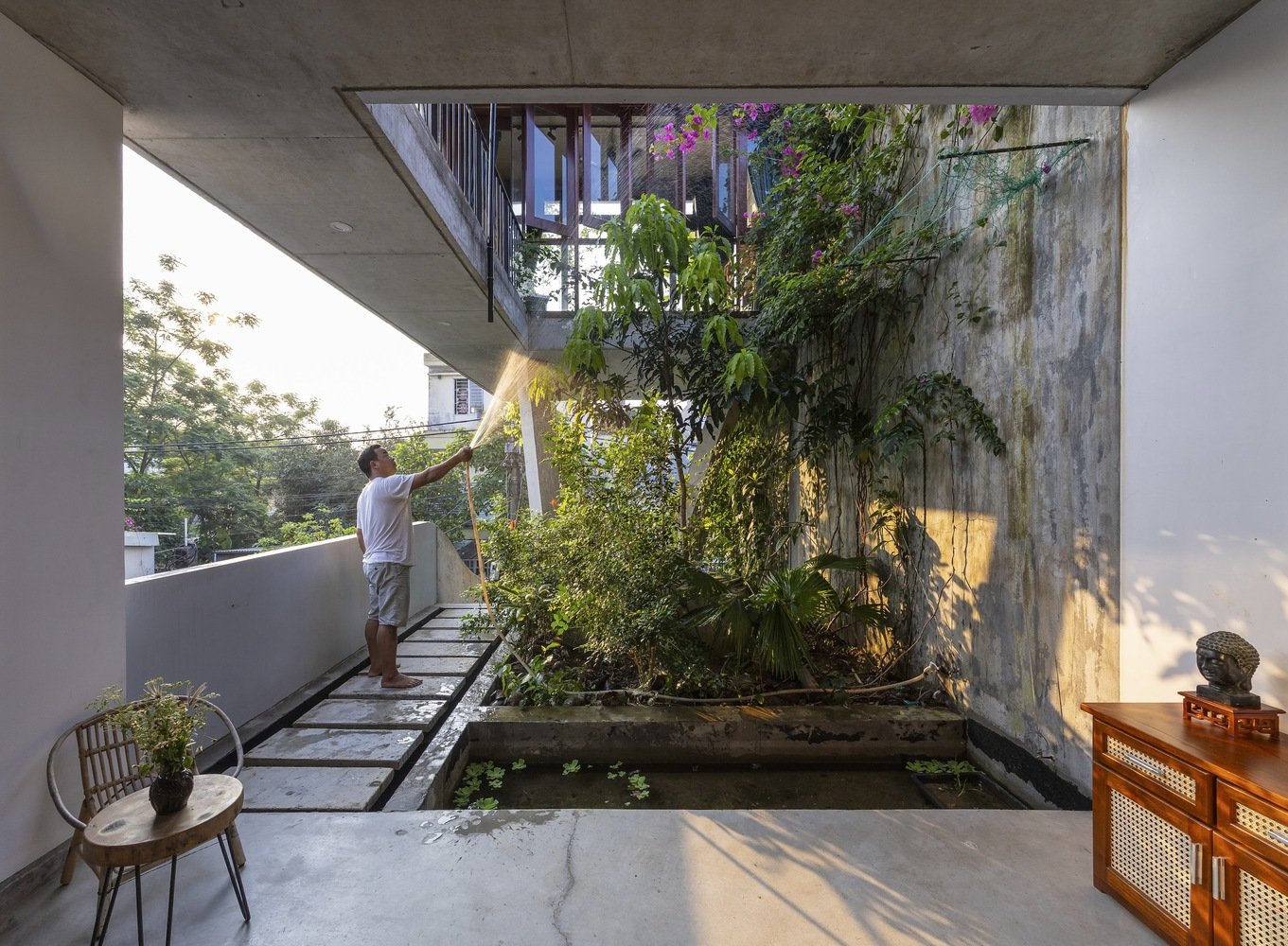Urban Sanctuaries: Creating Peaceful Homes Amidst City Chaos
"Feeling at home" is more than just an expression—it is the sense of warmth and comfort that transforms a space into a true refuge. To achieve this, elements like color, texture, lighting, and materials play a crucial role in shaping an environment that fosters relaxation and well-being. Backed by research in environmental psychology and neuroscience, the connection between physical spaces and human behavior highlights how architecture can directly influence the atmosphere, turning chaos into tranquility.
Finnish architect Juhani Pallasmaa argues that a home is more than just a physical structure; it is a fluid, evolving condition shaped by memories, images, desires, and fears. Built over time through rituals and routines, a home develops as individuals and families adapt to their surroundings. In this process, the pursuit of a space that conveys warmth and tranquility becomes essential—especially when the external world suggests the opposite. With this in mind, we have selected five strategies to help create sanctuaries shielded from external chaos.
These strategies work together to create serene environments that promote intimacy and comfort. Thoughtfully designed elements enhance personal connections and sensory experiences, cultivating spaces that invite tranquility. Additionally, a well-planned entryway serves as a transition from the external hustle to the peaceful retreat of home, reinforcing its role as a sanctuary within the urban landscape.
Creating Cozy Spaces
"The light from a home's window is a light that waits," observed Bachelard. A true home has a soul—a presence that awaits its inhabitant. Lighting plays a fundamental role in shaping this atmosphere. Since tranquility is closely linked to warmth and a sense of belonging, light becomes a powerful tool in influencing emotions. Soft, warm lighting creates a cozy ambiance, while abundant natural light promotes both physical and mental well-being. Alongside lighting, colors stimulate the brain, forming a unique visual language connected to personal memories and experiences. Color combinations communicate on a deep level, directly or indirectly influencing human behavior. Beyond shaping the spatial atmosphere, colors serve as a powerful tool for evoking emotions, with neutral and soft tones like blue, green, and light gray fostering a sense of calm.
One of the most well-known strategies for creating cozy spaces is incorporating natural elements and materials. This practice, known as biophilia, highlights the importance of nature in reducing stress. Depending on the available space, this can mean integrating thoughtfully designed landscaping or even small touches of greenery. Additionally, using natural materials for structures or finishes—such as wood—adds warmth to the home environment, reinforcing a connection to nature.
Acoustic Insulation
According to Schmid, "A house welcomes; it meets basic needs for security and belonging [...] as if offering endless comfort to humans, while the outside world often does the opposite." In this contrast between home and the external world, acoustic comfort becomes essential. Acoustics is one of the most complex aspects of built environments because human hearing is extremely sensitive. In this context, urban noise becomes a significant concern, directly impacting health and contributing to stress—making soundproofing essential.
To achieve this, various technologies can be used, such as floating floors, acoustic insulation for ceilings and walls (like rock wool and glass wool), or even soundproof windows and doors. A quicker and simpler solution for noise reduction is the strategic use of rugs, curtains, panels, and upholstered furniture. Adding soft music or nature sounds, like flowing water, further enhances the sense of calm.
Emotional Connection with Home
Heidegger states that 'to dwell is to care,' a continuous process of organizing and beautifying spaces, making them extensions of ourselves. Through symbols and design elements, humans imprint their identity onto their surroundings, turning a house into a reflection of their essence. The choice of finishes, furniture, and decorative objects often reveals the personality of the inhabitants, strengthening their emotional connection to the home. Sentimental items such as photographs, travel souvenirs, and artwork further enhance the sense of belonging and well-being, transforming the house into a true sanctuary.
Aroma and Textures
When asked about his childhood home, Finnish architect Juhani Pallasmaa noted that his memories are based more on scent than sight. According to him, every home has a distinct smell—one that often goes unnoticed while living there but is instantly recognizable upon returning. From an architectural perspective, incorporating scents from building materials and furniture is an interesting and often overlooked design approach. In an interview with Ila Bêka and Louise Lemoine, Pallasmaa suggested that architecture could integrate scents more actively, citing wood as an example. He explained that wood releases a familiar, comforting aroma, something he describes as a "touch for the nose."
In addition to scents, textures also contribute to a relaxing environment. The surfaces of floors, walls, and furniture, along with factors such as temperature, humidity, and ventilation, play a major role in tactile comfort. Natural, textured fabrics like cotton, linen, and wool add warmth to a space, providing pleasant sensory experiences.

















